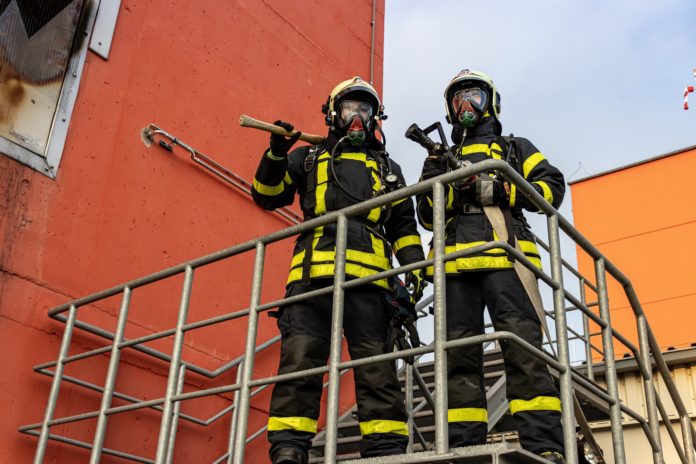Work is beneficial for health, but many individuals develop cardiovascular disease (CVD) during their working lives. Occupational cardiology is an emerging field that combines traditional cardiology sub-specialisms with prevention and risk management unique to specific employment characteristics and conditions. In some occupational settings, incapacitation through CVD can be catastrophic due to the nature of work and/or the working environment.
According to a review article published today in the European Journal of Preventive Cardiology, a journal of the European Society of Cardiology (ESC), Firefighters, police, and health staff could benefit from regular check-ups and monitoring to avoid heart events at work that might harm themselves or others.
The document sums up existing knowledge on screening, surveillance, and risk management in hazardous jobs – defined as those where cardiovascular disease can impact the safety of the employee and/or others, and the employer must manage these risks. In addition to emergency workers, hazardous occupations include bus and lorry drivers, pilots, aircrew, and astronauts.
But the paper highlights that “the lack of consensus or contemporary evidence typically results in decisions being made based on expert opinion. This can result in a lack of consistency in clinical decision-making which is increasingly being challenged, both by employees and employers.”
The authors said more research was needed to determine the optimal balance between protecting workers and the public while avoiding career-ending false-positive results.
For firefighters, cardiovascular disease is the most common cause of death while on duty, a trend that has increased over the last two decades. Heart attacks and sudden cardiac death account for 45% of deaths among firefighters while on active duty and primarily occur during fire suppression activities.
Review author Dr. Iain T. Parsons of the Royal Centre for Defence Medicine, Birmingham, UK, said: “If we take the example of firefighters, we know that the act of firefighting is associated with sudden cardiac death from coronary artery disease. Presently fire services examine cardiovascular fitness, but the tests vary widely by country.”
“In high hazard occupations, it is very common to apply a minimum physical fitness standard,” he continued. “Standards of physical fitness and strength have the two distinct advantages. First, ensuring that employees can undertake key physical tasks that are required in their role. And second, that the failure to reach certain physical fitness thresholds will expose undiagnosed health problems (particularly in the cardiopulmonary and musculoskeletal systems), which would be associated with greatly increased risk to the affected individual, their co-workers or members of the public.”
“However, optimal screening or periodic examination should be backed by evidence, and this is lacking presently,” said Dr. Parsons. “Further research is required into when to assess fitness, what additional measures could decrease morbidity or mortality (e.g., electrocardiogram or risk scoring) and what the downsides are of implementing these measures e.g., in terms of cost, false positives and the loss of workforce.”
There is a lack of standardization surrounding the licensing requirements to ensure air safety regarding pilots. “Despite recent efforts to unify standards to improve consensus in cardiovascular risk assessment, diverse approaches exist to evaluate a pilot’s risk of [cardiovascular] events,” states the paper. “Requirements to report medical conditions to authorities are also variable across regulatory jurisdictions.”
As for astronauts, the authors predicted that with the advent of commercial space travel and space tourism, the occupational management of astronauts is likely to increase. Dr. Parsons said: “It may be that qualified astronauts who are ‘mission responsible’ for space tourists will require more robust screening as a cardiac event in one with responsibility for relative laymen could be even more catastrophic. However, this would depend on the vehicle and planned journey and the degree of automation. I would anticipate that future models of safety would be based on the aviation precedence with dual qualified astronauts required permission.”
The authors called for collaboration among employers, regulatory bodies, and medical societies to provide transparent criteria for occupational screening that individuals balance the health, patient rights, and public safety.
Dr. Parsons said: “The most pressing need is to achieve societal standardisation of how to screen and risk manage workers as well as provide an opportunity to provide preventative care so as to keep people employed. In addition, most research in this field has been conducted in men. As women increasingly take on hazardous roles, it is crucial that studies examine how best to assess and monitor their cardiovascular risk and ultimately prevent dangerous health issues.”
Journal Reference
- Iain T Parsons, Edward D Nicol, David Holdsworth, Norbert Guettler, Rienk Rienks, Constantinos H Davos, Martin Halle, Gianfranco Parati; Cardiovascular risk in high-hazard occupations: the role of occupational cardiology. European Journal of Preventive Cardiology, zwab202, DOI: 10.1093/eurjpc/zwab202
